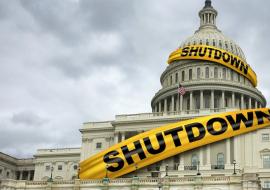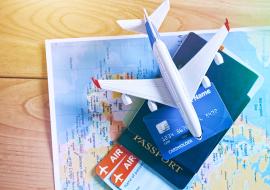Cuban Economy Grew 5 Percent in 2004
Cuban President Fidel Castro broke some good economic news in the Parliament on Christmas Eve as he went through an assortment of trade outcomes in 2004 and laid out new business opportunities for the island nation next year.
Investments in the nickel industry, the discovery of oil wells, credit lines and donations, heftier trade and financial ties with China and Venezuela, among other factors, helped the Cuban economy grow 5 percent in 2004.
Cuban tourism and the economy overall continued the steady growth of recent years in 2004 despite a pair of devastating hurricanes, increased U.S. sanctions and higher oil prices, the island´s top economic planner said this week.
In his annual yearend report, Economics Minister Jose Luis Rodriguez told Cuba´s National Assembly that 2004 had been "extraordinarily difficult" in part because of more than $2 billion in damage caused by Hurricanes Charley and Ivan.
Cuba, which imports about half of the petroleum it needs, also has been hit hard by oil prices. It also received fewer U.S. visitors than expected this year because of the tightening of American restrictions on travel to the island nation.
Nevertheless, the United Nations Economic Commission for Latin America and the Caribbean, using traditional criteria for calculating gross national product, reported last week that Cuba´s economy grew 3 per cent in 2004. Growth was 2.6 per cent the year before.
Rodriguez, using a different formula Cuban planners devised to take into consideration the nation´s broad social safety net and heavily subsidized services, said Thursday the economy grew 5 percent this year.
More than a decade ago, many Cuba watchers had predicted the economy would collapse as it struggled with the sudden loss of critical Soviet aid and trade.
But it has steadily grown since, in large part because of a new focus on tourism as its number-one source of foreign currency needed for international trade.
Rodriguez said 2.05 million people visited Cuba in 2004, despite stepped-up U.S. restrictions announced in the summer that cut the number of authorized family visits to the island by Cuban-Americans from once annually to once every three years.
He projected as many as 2.3 million people would visit Cuba in 2005.
Rodriguez said the government´s expectations for 2005 were low for the sugar industry, which was once the economic engine of this Caribbean nation. The industry has been undergoing major reshuffling in recent years.
The news was brighter for nickel, another major Cuban commodity sold abroad. Rodriguez projected production would reach 77,000 metric tons next year to be sold at favorable prices on the international market.
Cuba agreed to begin providing 4,400 metric tons of nickel annually to the fellow communist nation. The same agreement calls for a $500 million Chinese investment in a new nickel plant in Moa, in Cuba´s eastern province of Holguin.














